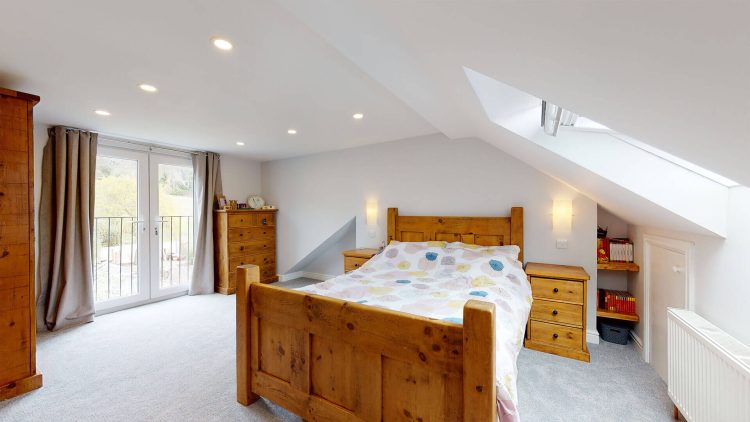Homeowners who want more living space but don’t want to tear down walls or move to a new place are finding loft conversions to be a great alternative. Adding extra living space for expanding families and boosting home values are just two of the many advantages offered by this adaptable solution. In this in-depth piece, we’ll look at the many reasons loft conversions are becoming popular among homeowners of all ages and backgrounds.
A loft conversion’s main selling point is the extra square footage it adds to your home. The attic space in many homes is now unused, but it may be turned into a valuable living space with some careful planning and construction. A loft conversion is a great way for homeowners to make the most of their unused attic space, which is like adding a whole new level to their home. Whether you’re looking to add a bedroom, a home office, a playroom, or a relaxing hideaway, this extra space can be transformed to suit your needs.
Loft conversions are attractive to homeowners for a number of reasons, one of which is the adaptability they provide. Loft conversions, in contrast to conventional additions, provide an empty canvas within the framework of the house, free from constraints such as restricted ground space and zoning regulations. Because of this adaptability, innovative design solutions can be tailored to meet the specific needs of each client. The design possibilities for loft conversions are practically limitless, ranging from cottage-style rooms with exposed beams and dormer windows to sleek, modern spaces with skylights and minimalist architecture.
The popularity of loft conversions is greatly influenced by financial factors. Loft conversions are typically a more economical way to get extra living space than relocating to a bigger property or constructing an addition on the ground level. Since the space’s basic framework already exists, the method usually necessitates less structural work than other kinds of house modifications. Loft conversions are a great choice for people who want to get the most out of their money because they can reduce total expenses and finish the project faster.
The value of a home can go up a notch after a loft conversion. Loft conversions are highly recommended by real estate experts for their ability to increase a home’s value. An additional bedroom and bathroom, along with more usable living space, can greatly increase a property’s appeal to homebuyers. Loft conversions are a great way to meet your present living demands and also increase the value of your house in the long run.
Loft conversions offer numerous benefits, one of which is the increased importance of energy efficiency among homeowners. Adding insulation and new windows during a loft conversion can improve the home’s thermal performance overall. A more pleasant home all year round and maybe cheaper energy bills are possible outcomes of this improved energy efficiency. Loft conversions are already known for their eco-friendliness, but many go the extra mile by adding solar panels or energy-efficient lighting.
It would be a mistake to discount the aesthetic value of a loft conversion. Adding a well-planned loft conversion to your home can do wonders for its curb appeal. By including skylights or wide windows into the design, a newly added living space can open up the interior and make it feel more light and airy. Loft conversions, when done well, can increase a home’s architectural appeal from the outside, which in turn can increase the home’s desirability.
Loft conversions are a great way for expanding families to meet their evolving needs without having to uproot their lives and move to a new house. A spare bedroom or playroom can give kids the room they need as they develop, while also giving teens some space to themselves as they become more self-reliant. On the other hand, a master suite can be created through a loft conversion, providing parents with a sumptuous refuge away from the hustle and bustle of family life. Loft conversions are perfect for families at all stages of life because of their adjustability.
Loft conversions have many benefits, one of which is the possibility of increased natural light. Skylights and roof windows, which are commonly found in attics, can let in an abundance of natural light into the newly converted living space. An open floor plan that lets in plenty of natural light may make a room feel more spacious and bright, which in turn makes life there more enjoyable. Loft conversions, thanks to the clever arrangement of windows, can also provide vistas and perspectives that might not be accessible from other rooms in the house.
Loft conversions are another option for people who want to be able to work from the comfort of their own home. Many homeowners are exploring options for setting up home offices in response to the growing popularity of telecommuting and other forms of flexible work arrangements. Converting a loft into a usable office space is a great way to get away from the hustle and bustle of the main floor of the house. Making a clean break between your home office and your personal life is one way this might help you achieve a better work-life balance.
Loft conversions might open up alternatives for people looking to supplement their income through rental income. The legality of renting out a converted loft as an independent dwelling unit depends on building codes and the specifics of the property’s layout. This is a great way to put unused space to use while also giving homeowners a nice side income.
As an added bonus, loft conversions aren’t always as invasive as other home renovation projects. There will be little disruption to the main living rooms since most of the work may be done outside. This allows homeowners to stay in their house during the conversion process, saving them money and hassle compared to renting a new place to reside.
It’s important to remember that, according to local restrictions and property details, loft conversions are frequently able to be executed under approved development rights. This simplifies the procedure and eliminates the need for official planning approval in many instances. Still, it’s smart to double-check with the proper authorities and get expert advice to make sure you’re following all the rules and building laws.
We must not ignore the structural advantages of loft conversions. Reinforcing the home’s existing structure is a common practice when converting a loft, and it can increase the home’s stability and lifespan. This is especially true for older houses, as updating them with modern structural elements can make them more resilient and maybe even make them last longer.
Loft conversions also present chances to integrate smart home features and contemporary conveniences. Building a new house is a great chance to upgrade to smart home technology, including smart lighting, energy-efficient appliances, and automation systems. This can update the entire house to modern living standards while also improving the new space’s utility and comfort.











